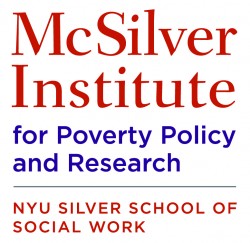Despite some areas of recovery following the Great Recession, unemployment rates continue to be high, especially for those who previously have been incarcerated. The 65 million Americans, who have been incarcerated often for non-violent crimes, are disqualified by having a criminal record from an estimated 800 different occupations for life.
In addition, studies show that nearly half of ex-offenders remain unemployed for up to a year after release. With more than 90 percent of employers using background checks for potential employees, incarceration and the risk of subsequent unemployment have a profound effect on the economy.
 The United States currently incarcerates more of its citizens than any other country. Today, 1.5 million Americans are in prison, a number that has increased fivefold since 1980. Mass incarceration disproportionately affects African-American families. Since 1980, 1 in 4 African-American children have experienced having a parent incarcerated. Not only does incarceration prevent employment, but it affects access to public assistance, housing and education opportunities, and the ability to build credit. Because of incarceration’s contribution to reinforcing poverty, many have argued for the implementation of diversion programs for low-level offenders with substance abuse disorders or mental illness. This issue is key in California’s upcoming elections, in which Proposition 47 has been put forth to reduce incarceration for low-level, non-violent offenders, an initiative that would allow for the allocation of funds, otherwise spent on the prison system, to bolster diversion programs.
The United States currently incarcerates more of its citizens than any other country. Today, 1.5 million Americans are in prison, a number that has increased fivefold since 1980. Mass incarceration disproportionately affects African-American families. Since 1980, 1 in 4 African-American children have experienced having a parent incarcerated. Not only does incarceration prevent employment, but it affects access to public assistance, housing and education opportunities, and the ability to build credit. Because of incarceration’s contribution to reinforcing poverty, many have argued for the implementation of diversion programs for low-level offenders with substance abuse disorders or mental illness. This issue is key in California’s upcoming elections, in which Proposition 47 has been put forth to reduce incarceration for low-level, non-violent offenders, an initiative that would allow for the allocation of funds, otherwise spent on the prison system, to bolster diversion programs.
Direct Service Implications
Because of the barriers to employment caused by involvement in the criminal justice system, it is especially important for direct service providers to incorporate employment placement into their existing programs. Additionally, as many former inmates face challenges around substance abuse and mental illness, it is critical that they receive appropriate care to prevent recidivism and encourage reintegration into communities after prison. Services and programs in New York City that aid ex-offenders with this transition can be found here.
Courtesy of McSilver Institute of Poverty Policy and Research who has kindly given SJS permission to syndicate this piece.
Disclaimer: The views and opinions expressed in the Policy News Briefs are not necessarily the views of the McSilver Institute for Poverty Policy and Research or NYU’s Silver School of Social Work. If you have comments or suggestions about this service, contact us at info@mcsilver.org.
Sources:
Our authors want to hear from you! Click to leave a comment
Related Posts



